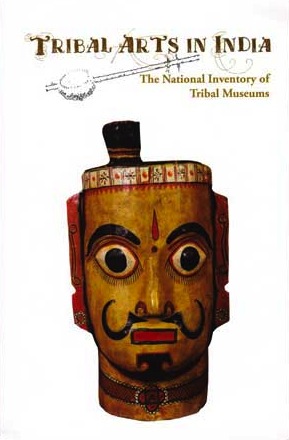
Read or download titles for free (eBooks & Magazine) >>
“There was no train when I came to the village as a young bride of 11 and no thieves either! No telephones, no watches none of these modern things that I now put into my work,” she laughs. “I was so lonely in my husband’s house, I started making clay figurines. Birds, beasts and animals, parrots, clay dolls all became my playmates. And then one day some people from the Bharat Bhavan in Bhopal came looking for artists like me. That was many years ago. I have since taught several others to sculpt and paint in our traditional style,” she recalls.
Best of adivasi art
Sundari Bai is one of several tribal artists invited to demonstrate their work during a major exhibition of Indian tribal art at the Quai Branly Museum in Paris. Entitled “Other Masters, Contemporary creations of the Adivasis”, the exhibition, curated by Dr. Jyotindra Jain, showcases Indian adivasi art at its best, both in its traditional and ritualistic form and as it moves, under the influence of technology, mass media and the evolution of society at large, towards a more contemporary, “modern” idiom. […]
These individual works of great power demonstrate that tribal art in India is no longer limited to the “community” but has crossed the threshold to produce individual artists capable of giving voice to their inner turmoil through their own specific vision.
Source: “Magical idiom” by Vaiju Naravane The Hindu : Arts / Magazine : Magical idiom
Address : https://www.thehindu.com/arts/magazine/article391448.ece
Date Visited: 19 December 2022
[Bold typeface added above for emphasis]
Read also Adivasis’ profound influence on modern Indian art: “The Triumph of Modernism” by Partha Mitter >>
“Rural communities certainly need education, but their life is interwoven with many social and cultural issues that must all be taken into account. UNESCO is right to argue that an integrated approach with a holistic view is appropriate.” – Dr. Boro Baski >>
Learn more
Childhood | Childrens rights: UNICEF India | Safe search
Crafts and visual arts | Masks
Education and literacy | Right to education
eBook | Adivasi Stories from Gujarat
eBook | “Where the mind is without fear”: Tagore, Gitanjali and the Nobel Prize
Literature and bibliographies | Literature – fiction | Poetry
Tips for using interactive maps
Toggle to normal view (from reader view) should the interactive map not be displayed by your tablet, smartphone or pc browser
For details and hyperlinks click on the rectangular button (left on the map’s header)
Scroll and click on one of the markers for information of special interest
Explore India’s tribal cultural heritage with the help of another interactive map >>